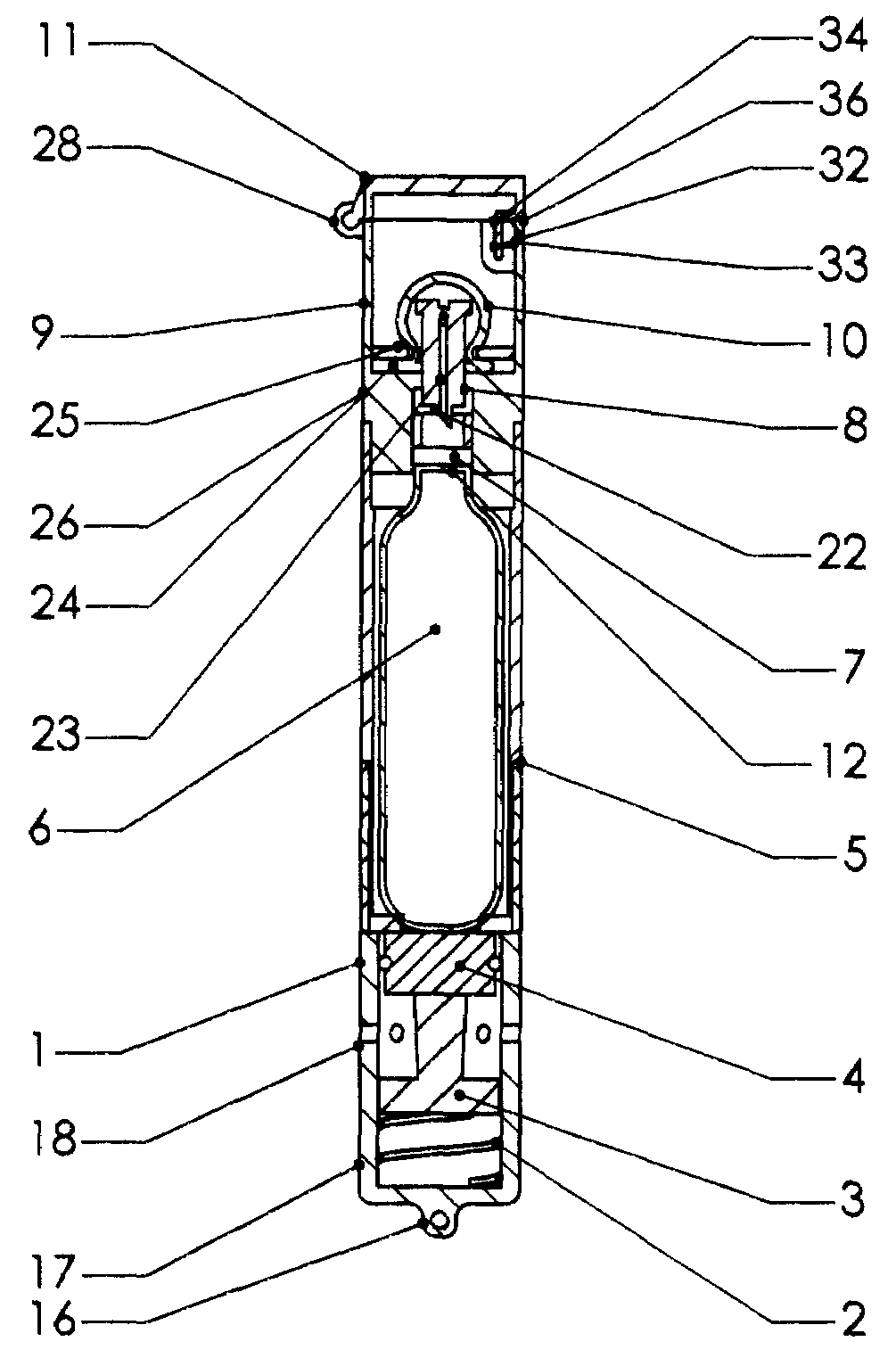Inflatable buoyancy device with water-dependant triggering mechanism
a technology of triggering mechanism and inflatable buoy, which is applied in the direction of buoys, waterborne vessels, special-purpose vessels, etc., can solve the problems of many important objects on the boat sinking, catastrophic consequences of loss of objects, and limited to small objects
- Summary
- Abstract
- Description
- Claims
- Application Information
AI Technical Summary
Benefits of technology
Problems solved by technology
Method used
Image
Examples
Embodiment Construction
[0068]FIGS. 1A through 1D are a sequence of side, cross sectional views of one embodiment of the invention, showing the various parts of the invention. This embodiment has a cylindrical container and an end cap, where the end cap is released by a sponge / latch combination. The idea behind the invention is to provide a device which automatically punctures a compressed gas canister upon immersion in water, or upon a set time period of immersion in water or upon reaching a certain depth or water pressure, whereupon the compressed gas inflates a balloon or other inflatable device, causing the object to rise to the surface. Alternatively, in the case of retrieving an already sunken object, the device can be attached to the outside of the sunken object such that by inflating the device it adds external buoyancy to the sunken object to lift it to the surface, or, the device can be inserted into the inside of the sunken object such that it not only provides lift through buoyancy, but also di...
PUM
 Login to View More
Login to View More Abstract
Description
Claims
Application Information
 Login to View More
Login to View More - R&D
- Intellectual Property
- Life Sciences
- Materials
- Tech Scout
- Unparalleled Data Quality
- Higher Quality Content
- 60% Fewer Hallucinations
Browse by: Latest US Patents, China's latest patents, Technical Efficacy Thesaurus, Application Domain, Technology Topic, Popular Technical Reports.
© 2025 PatSnap. All rights reserved.Legal|Privacy policy|Modern Slavery Act Transparency Statement|Sitemap|About US| Contact US: help@patsnap.com



